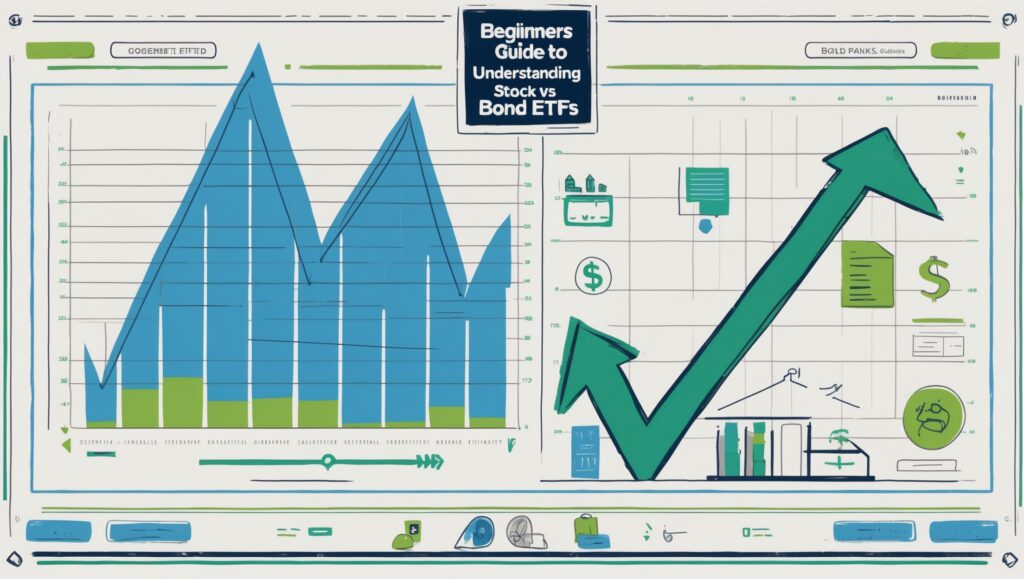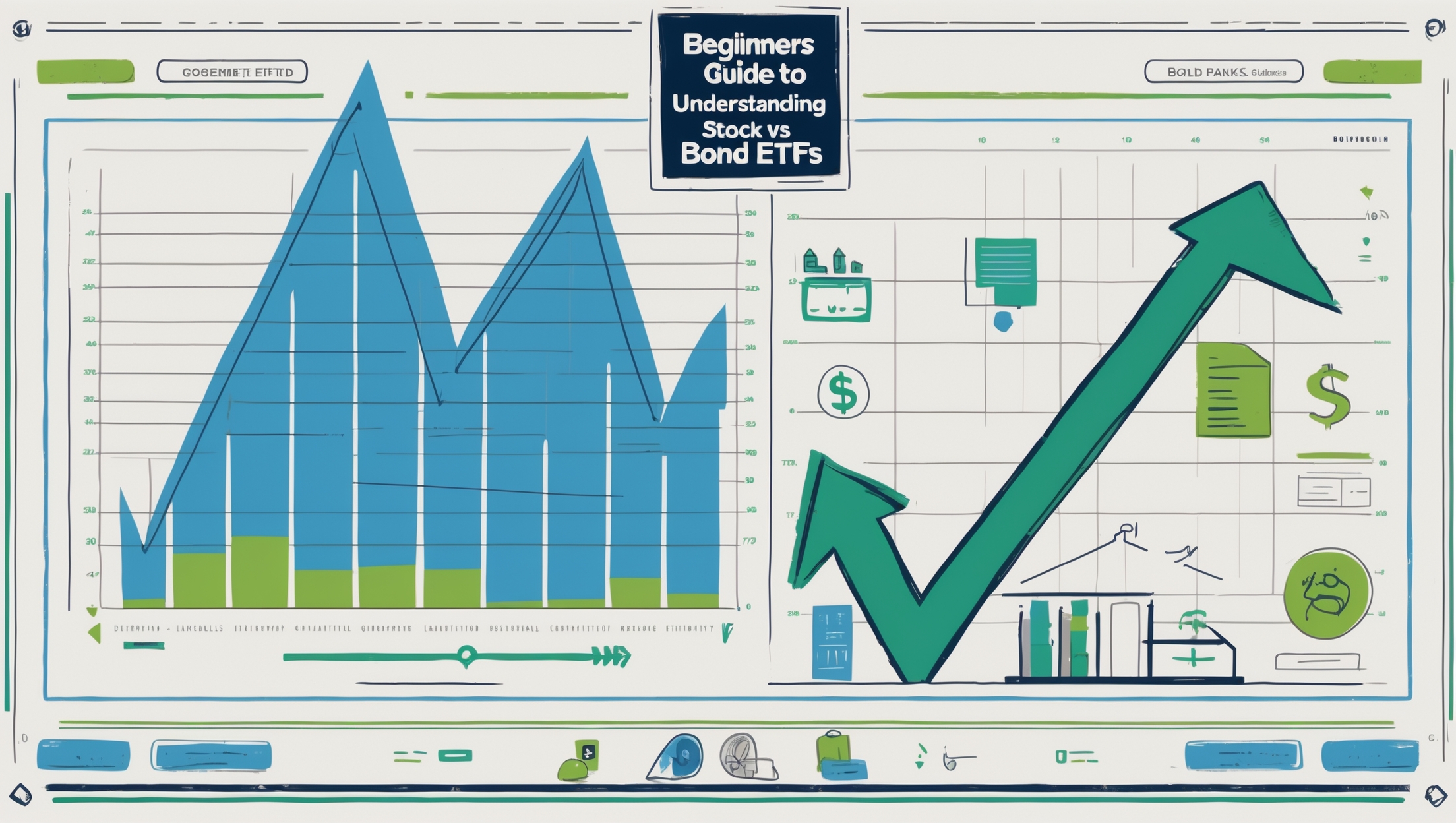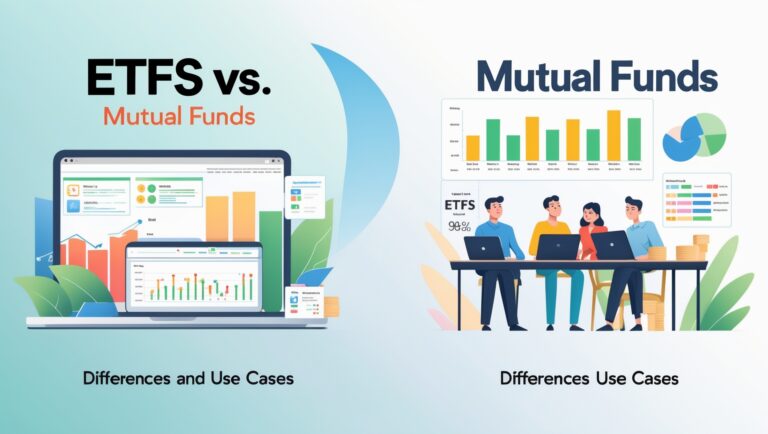Beginners’ Guide to Understanding Stock vs. Bond ETFs
Beginners’ Guide to Understanding Stock vs. Bond ETFs
Confused about stock vs. bond ETFs? In this beginner-friendly guide, I’ll explain the key differences, how I personally use them in my portfolio, and why they matter for building wealth. Plus, grab my ebook Pay Bills with Stocks to learn my full trading system.

Table of Contents
When I first started investing, I had no clue what an ETF even was. Everyone around me kept talking about how they were “safer” or “smarter” than picking individual stocks, but I didn’t understand why. Over time, I realized that knowing the difference between stock ETFs and bond ETFs completely changed the way I build my portfolio.
In this guide, I’ll explain what each type is, how I personally use them, and why they can help you invest smarter without getting overwhelmed. And if you want my complete strategy, I break it all down in my ebook Pay Bills with Stocks — the exact system I use to generate consistent income from the stock market.
What is an ETF?
Before we dive into stocks vs. bonds, let’s clear up what an ETF (Exchange-Traded Fund) actually is.
Think of an ETF like a basket. Instead of buying one single stock or bond, you’re buying a basket filled with many of them. This instantly gives you diversification without having to pick every individual investment yourself.
For me, ETFs became a game-changer because I no longer had to worry about choosing the “perfect” stock — I could invest in an entire sector or category at once.
Understanding Stock ETFs
A stock ETF is simply an ETF filled with stocks. Some focus on big companies (like the S&P 500), while others target sectors such as technology, healthcare, or energy.
Here’s what I like about stock ETFs:
- They offer growth potential similar to owning stocks directly.
- They give you instant diversification across many companies.
- They’re usually less risky than betting on one single company.
When I buy a stock ETF, I’m essentially saying: “I believe this sector or the overall market will grow, but I don’t want to gamble on just one stock.”
Understanding Bond ETFs
On the flip side, a bond ETF is made up of bonds — essentially loans you give to governments or companies. These ETFs tend to be more stable than stock ETFs, but they usually offer lower returns.
Here’s why I include bond ETFs in my portfolio:
- They provide steady income through interest payments.
- They act as a safety net when the stock market dips.
- They help balance risk, especially during uncertain times.
For me, bond ETFs are like the cushion that protects my portfolio when the market gets shaky.
Stock ETFs vs. Bond ETFs: Key Differences
When I first tried to understand the difference, I asked myself one simple question: “Do I want growth, or do I want stability?”
- Stock ETFs → Higher risk, higher reward, better for growth.
- Bond ETFs → Lower risk, lower reward, better for safety and income.
A healthy portfolio, in my opinion, has a mix of both. That’s what gives me the confidence to stay invested long-term.
How I Use Stock and Bond ETFs Together
In my personal investing, I like to build a balance:
- I lean more on stock ETFs for growth because I want my money to compound over time.
- I keep bond ETFs as a stabilizer, especially when markets get unpredictable.
For example, if I have 70% in stock ETFs, I might balance it with 30% in bond ETFs. That way, I get growth without feeling like I’m gambling everything.
Why Beginners Should Start with ETFs
If you’re just starting out, I honestly think ETFs are one of the easiest ways to learn investing. They’re simple, they’re diversified, and they don’t require you to know everything about every single company.
When I began, ETFs took away the stress of feeling like I had to “pick winners.” Instead, I could focus on building a balanced portfolio that matched my goals.
The Blueprint I Use to Pay Bills with Stocks
Learning about ETFs was just one step in my journey. Over time, I built a complete system where I use stock investing not just for long-term growth, but for monthly income that helps me pay my bills.
That’s exactly what I share in my ebook Pay Bills with Stocks. Inside, I explain how I choose investments, balance risk, and create consistent cash flow — all with the same tools I’ve shared here.
Final Thoughts
At the end of the day, stock ETFs and bond ETFs aren’t complicated — they’re just tools. The real power comes from how you use them together.
For me, stocks give me growth, bonds give me security, and ETFs give me the diversification I need to stay confident in any market. If you’re a beginner, starting with ETFs could save you years of mistakes and stress.
And if you want to see how I take this even further to actually pay bills with stocks, check out my ebook Pay Bills with Stocks. It’s the guide I wish I had when I started.
When I first compared stock ETFs vs. bond ETFs, I thought the choice was either one or the other. But I quickly realized it’s not about choosing sides — it’s about finding the right mix for my personal goals. That shift in mindset helped me build a portfolio that feels balanced instead of risky.
One thing I like about stock ETFs is how flexible they are. I can invest in broad market ETFs like the S&P 500, or I can focus on specific sectors like technology, healthcare, or clean energy. This gives me the freedom to target growth areas I believe in, without taking the risk of picking one single company.
On the other hand, bond ETFs give me peace of mind. They don’t move as quickly as stocks, but that’s the point. They give me steady returns that act like an anchor when the stock side of my portfolio gets too volatile. Without them, I’d probably panic more during downturns.
I also noticed that bond ETFs are especially useful when I’m planning for shorter-term goals. If I know I’ll need some of my money in the next few years, I’d rather park it in bonds or bond ETFs where it’s safer, instead of risking it all in stocks that could swing wildly.
Another big lesson I learned is that stock ETFs shine in the long run, while bond ETFs shine in the short run. Over 10 or 20 years, stocks tend to outperform bonds, but in the short term, bonds can keep my portfolio stable. Knowing this helped me match investments with my timelines.
A mistake I made early on was thinking I could just load up on one ETF and be done. The reality is that even with ETFs, I still need to be intentional. For example, I might balance a U.S. stock ETF with an international one, and pair those with a bond ETF to smooth out risk.
Sometimes I hear people say bonds are “boring,” but for me, boring is a good thing. When markets crash, those so-called boring bond ETFs are the reason I don’t lose sleep at night. They’re like the safety net I didn’t appreciate until I really needed it.
When I first tried bond ETFs, I was surprised at how much more comfortable I felt with my portfolio. Instead of stressing about timing the market, I knew that even if stocks dropped, my bond side would help balance things out. That emotional stability is just as valuable as the financial stability.
One strategy that’s worked well for me is adjusting my mix of stock ETFs and bond ETFs depending on the market. For example, if stocks are running hot, I may take some profits and move them into bonds. If stocks drop, I can shift money back into equities at a discount.
I also like that ETFs are easy to buy and sell, just like regular stocks. This means I can move between stock ETFs and bond ETFs quickly if my strategy changes. That flexibility makes ETFs a great tool for beginners who are still figuring things out.
Another thing I’ve learned is that not all stock ETFs are created equal. Some are built for growth, while others focus on dividends. I personally like mixing both because growth helps me build wealth, and dividends give me cash flow I can actually use.
Bond ETFs also come in different flavors. Some invest in government bonds, which are safer, while others focus on corporate bonds, which usually pay more but carry a little more risk. I like having both in my portfolio depending on what I need at the time.
For beginners, I always suggest starting with simple, broad ETFs instead of complicated niche funds. When I began, I made the mistake of chasing fancy ETFs that I didn’t fully understand. Now, I stick to the basics — broad stock ETFs and bond ETFs that do the heavy lifting without overcomplicating things.
Over time, I realized that having both stock and bond ETFs isn’t just about diversification — it’s about confidence. Knowing that I’ve covered both growth and stability keeps me from making emotional decisions when markets get rough. That’s priceless.
Finally, the most important thing I can share is this: ETFs make investing accessible. I don’t need to be an expert stock picker or a bond analyst. I can simply invest in ETFs that already spread out the risk for me, while I focus on my long-term goals.

Stay ahead in the stock market! Subscribe to our newsletter and receive exclusive stock flow reports, trading insights, and actionable tips directly in your inbox. Join thousands of traders who get our updates first.







